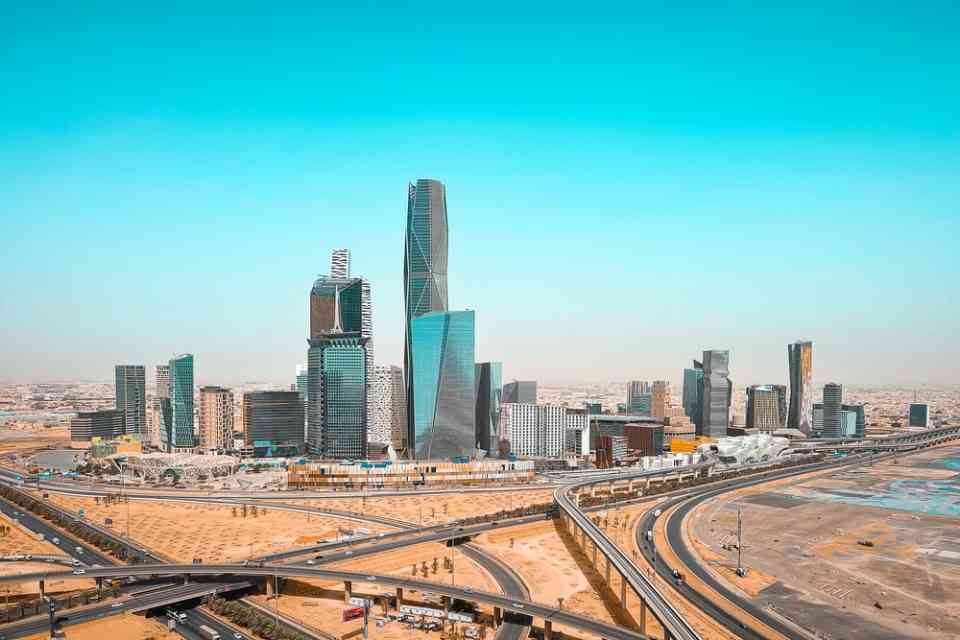The advancement of regional economies in Saudi Arabia is expected to play a vital role in achieving the Kingdom’s Vision 2030, which aims to position the country among the world’s top 15 largest economies. A report by management consulting firm Arthur D. Little (ADL) outlines key success factors that could drive the development of Saudi Arabia’s regional economies.
Eddy Ghanem, Partner at Arthur D. Little Middle East, emphasized the importance of this development strategy, noting that it has significant economic implications. He stated that by tapping into the potential of areas beyond major cities, Saudi Arabia can foster inclusive growth and progress towards becoming a leading global economy.
ADL estimates that reducing the GDP per capita disparity between major urban centers and regional areas by just 10% could add approximately $7.2 billion to the national GDP annually.
Saudi Arabia’s regions possess considerable potential to bolster GDP growth. Established metropolitan areas such as Riyadh, Dammam, and Jeddah have an average GDP per capita of around US $28,500, while regional areas like Aseer and Al-Qaseem have a GDP per capita closer to US $19,500.
The report draws insights from ongoing collaborations with Saudi regions and global benchmarks like Brazil’s Growth Acceleration Program (PAC) and Spain’s regional development strategies. It identifies five foundational pillars for advancing regional development:
-
- Strategy: Coordinate regional strategies with national goals, capitalize on local strengths, and emphasize sustainable development.
- Governance: Secure stakeholder commitment, set clear frameworks, and establish coordination mechanisms for effective collaboration.
- Human Capital: Invest in customized development programs to equip the workforce with essential skills and promote retention through appealing living conditions and incentives.
- Infrastructure: Develop comprehensive infrastructure using various financing models to reduce regional disparities.
- Investment: Encourage private sector involvement through dedicated units, strategic promotion, and comprehensive support services, leveraging entities like the Public Investment Fund to drive growth.
Tobias Aebi, Principal at Arthur D. Little Middle East, added that unlocking regional growth potential requires a multifaceted approach encompassing strategic vision, robust governance, human capital development, infrastructure enhancement, and investment attraction. These elements are crucial for achieving Saudi Arabia’s ambitious socioeconomic goals and enhancing global recognition of its regions.
Incorporating these foundational pillars into regional development initiatives will help Saudi Arabia realize its global economic aspirations in line with Vision 2030 while unlocking social potential across the Kingdom’s regions.
| GDP (nominal) | Capital | Head of State | Head of Government | GDP (nominal) per capita | GDP (PPP) | GDP (PPP) | GDP (PPP) per capita |
|---|---|---|---|---|---|---|---|
| Saudi Arabia | Riyadh | Salman bin Abdulaziz Al Saud | Mohammed bin Salman Al Saud | 1.069.437 | 32.586 | 2.390.000 | 68.453 |
Have you read?
Countries: Powerful Passports.
Countries: Richest.
Countries: Poorest.
Countries: Happiest.
Countries: Life Expectancy.
Add CEOWORLD magazine to your Google News feed.
Follow CEOWORLD magazine headlines on: Google News, LinkedIn, Twitter, and Facebook.
Copyright 2024 The CEOWORLD magazine. All rights reserved. This material (and any extract from it) must not be copied, redistributed or placed on any website, without CEOWORLD magazine’ prior written consent. For media queries, please contact: info@ceoworld.biz
























































![Social Media Spring Cleaning [Infographic] Social Media Spring Cleaning [Infographic]](https://imgproxy.divecdn.com/9e7sW3TubFHM00yvXe5zvvbhAVriJiGqS8xmVFLPC6s/g:ce/rs:fit:770:435/Z3M6Ly9kaXZlc2l0ZS1zdG9yYWdlL2RpdmVpbWFnZS9zb2NpYWxfc3ByaW5nX2NsZWFuaW5nMi5wbmc=.webp)
![5 Ways to Improve Your LinkedIn Marketing Efforts in 2025 [Infographic] 5 Ways to Improve Your LinkedIn Marketing Efforts in 2025 [Infographic]](https://imgproxy.divecdn.com/Hv-m77iIkXSAtB3IEwA3XAuouMwkZApIeDGDnLy5Yhs/g:ce/rs:fit:770:435/Z3M6Ly9kaXZlc2l0ZS1zdG9yYWdlL2RpdmVpbWFnZS9saW5rZWRpbl9zdHJhdGVneV9pbmZvMi5wbmc=.webp)












